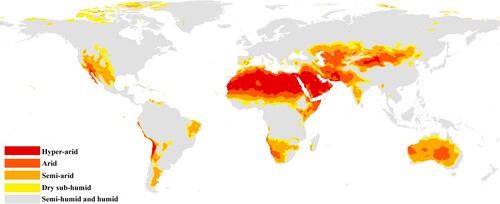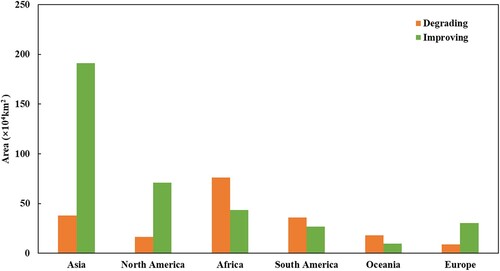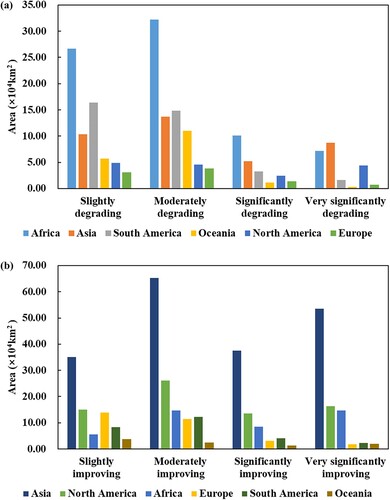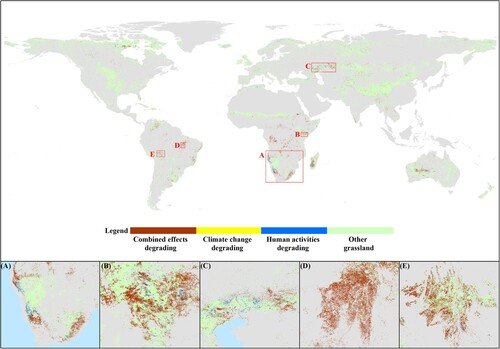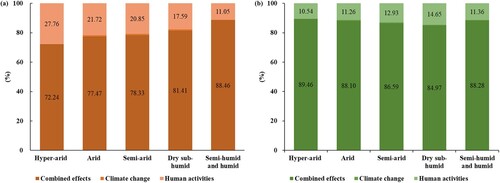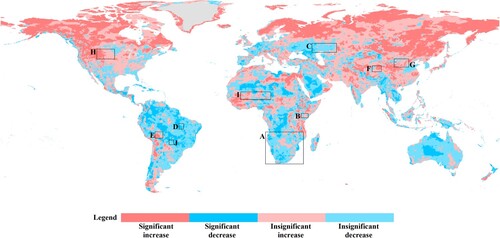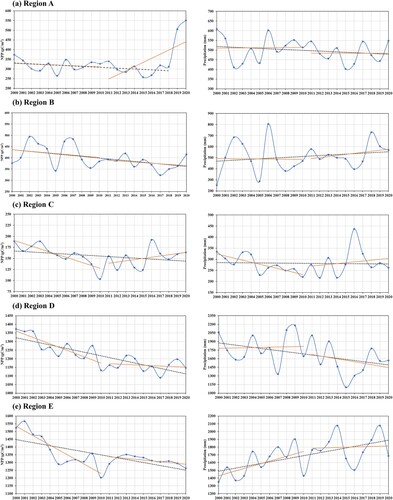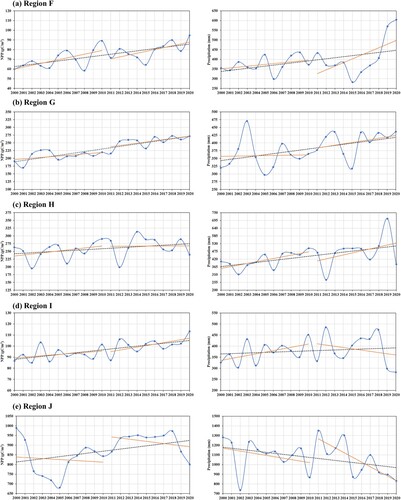Figures & data
Table 1. Climatic regionalization indicators of desertification.
Table 2. Grading standard for assessment of global grassland degradation trends.
Table 3. Statistics on the global grassland degrading areas in different climatic regions across continents (104km2).
Table 4. Statistics on the global grassland improving areas in different climatic regions across continents (104km2).
Figure 4. Distribution of global grassland degrading areas in different degrees from 2000–2020 and hotspots locations: Southern Africa (region A); East African Plateau (region B); Northern Caspian Sea in Asia (region C); Eastern Brazilian plateau (region D); Northern Bolivia (region E).
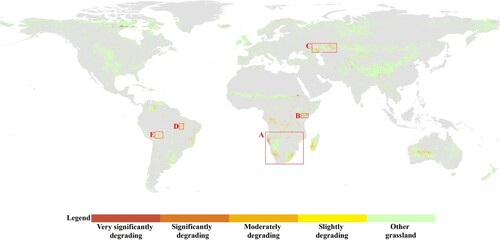
Figure 5. Distribution of global grassland improving areas in different degrees from 2000–2020 and hotspots locations: Qinghai-Tibet Plateau in China (region F); Loess Plateau (region G); Central North America (region H); Western Sahel in Africa (region I); Northern La Plata (region J).
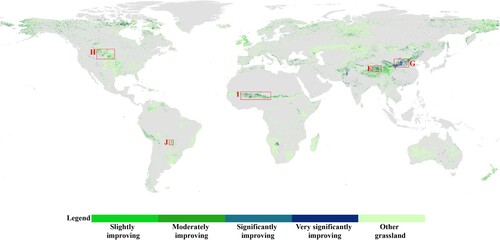
Figure 7. Global grassland degrading in different degrees across hotspots and remote sensing comparative images of random points in different periods.

Figure 8. Global grassland improving in different degrees across hotspots and remote sensing comparative images of random points in different periods.
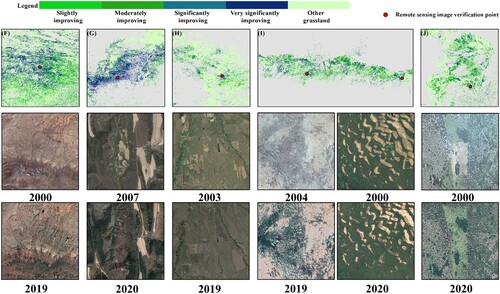
Figure 9. Global grassland degrading (a) and improving (b) proportion to different degrees in different climatic regions.

Table 5. Statistics on the global grassland degrading and improving driving factors areas and proportion.
Data availability statement
The data that support the findings of this study are available from the corresponding author, [Bin Sun], upon reasonable request.

